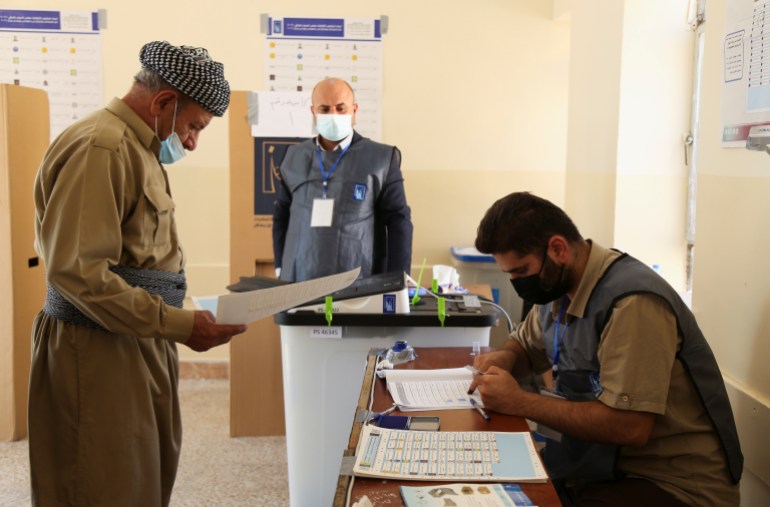Iraq is witnessing an escalating political crisis that reached its climax today, Monday, after deaths and injuries occurred in clashes in the Green Zone in central Baghdad. The new government of the country.
In the following pictures, an overview of the conflict's background and how it reached the current clash stage.
The Iraqi elections that were held in October 2021 resulted in the emergence of the Sadr movement as the largest parliamentary bloc after it won 73 seats out of a total of 329 in parliament, while the share of the Iranian-backed factions (the coordination framework) fell to 17 from 48 previously (Reuters)
Al-Sadr refused to ally with the coordination framework that includes prominent Shiite forces, and went to an alliance with the Sunnis and the Kurds to form an alliance called "Save the Nation." He nominated Muhammad al-Halbousi as speaker of parliament, Kurdish politician Hoshyar Zebari as president of the republic, and Jaafar Muhammad Baqir al-Sadr as prime minister (Reuters)
Al-Sadr tried to ally with independents in the House of Representatives, to pass the President of the Republic, and participate in the process of choosing the next government, but the attempt was unsuccessful, to complicate the political scene, and Al-Sadr decided to waive the coordination framework to form the next government, but the latter was unable to collect the votes required to choose a president, Because of the blocking third (Reuters)
On June 12, deputies of Sadr’s parliamentary bloc resigned, and the coordination framework and independents replaced the Sadrist bloc’s seats. And set July 31 as the date for the parliament session to pass (communication sites)
On July 30, al-Sadr's supporters stormed the parliament building and held a sit-in inside it to prevent the coordination framework from forming any government, rejecting the nomination of al-Sudani, whom al-Sadr's supporters consider loyal to former Prime Minister Nuri al-Maliki, which ignited the protests (Reuters)
On August 23, Sadr's supporters expanded their sit-in to include the Judicial Council building, to demand the dissolution of parliament and the holding of early parliamentary elections (Reuters)
Al-Sadr set a 72-hour deadline to end the presence of the ruling political parties since 2003 until now, including the Sadrist movement, by signing an agreement and opening the way for the emerging political forces to form the next government by entering early elections (Reuters)
Al-Sadr announced today, Monday, the retirement of political activity, which prompted his supporters to expand the protests (Reuters)
Al-Sadr's supporters stormed the headquarters of the President of the Republic, Barham Salih, and some local government headquarters (Reuters)
Iraqi security forces imposed a curfew in the capital, Baghdad, to prevent al-Sadr supporters from reaching government headquarters and foreign embassies in the Green Zone, and imposed a curfew in the rest of the governorates of central and southern Iraq (French)
Caretaker Prime Minister Mustafa Al-Kazemi decided to suspend cabinet sessions, until further notice, in order for a group of demonstrators to enter the Cabinet headquarters, and declared a state of maximum alert in Baghdad for all security forces (Getty Images)
Sadr's supporters over the government headquarters in the capital, Baghdad (Anatolia)
Security forces fired heavily inside the Green Zone in Baghdad, and were able to control the presidential palace after expelling the demonstrators (Reuters)
Dozens of dead and wounded were killed during renewed shooting in the Green Zone in central Baghdad, coinciding with the start of a comprehensive curfew in all Iraqi provinces (Reuters)
Iraqi medical sources said that 10 people were killed and 200 wounded - including a number of security personnel - in shootings in and around the Green Zone (Reuters)

